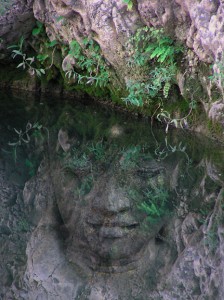An excerpt from a teaching called Awakening from Non-Recognition by Jetsunma Ahkon Lhamo
Guru Yoga must be seen not as an end but as a means to an end. Quite frankly, speaking for myself and I’m sure most other teachers, we could care less. I’ve described this many times before. I just hate the whole prostration thing. It takes me forever to get through a room. If one practices in a profound way, these prostrations are an opportunity, and that’s why I allow them to be practiced here in the same way that they are practiced generally in our tradition. Otherwise I wouldn’t, because they bother me, but I allow them because it is an opportunity to make an offering and to move immediately—body, speech and mind—into a posture of recognition. You are speaking, “I take refuge in the Lama. I take refuge in the Buddha. I take refuge in the Dharma. I take refuge in the Sangha.” You are engaging in conduct with your body. You are engaging in intention with your mind. With body, speech and mind you are connecting to recognition, and that’s why I allow it.
The relationship with one’s teacher is utilized as the water of life or some sort of ultimate nectar or ultimate empowerment that provides a way for us to begin to recognize that which is holy arises in the world and that each of us is that. Each one of us should practice like that. To the degree that we hold the teacher above the crown of our head and then take the teacher into our hearts, without finding reasons not to—because those reasons not to are the very reasons we are using to remain lost in samsara—to that degree we learn to recognize. Yes, we know you’re clever enough to find reasons not to recognize the nature. If you need to be clever in the way Americans need to be clever in this day and age, you are already clever, very good, now let’s move on. Let’s see if you can learn recognition.
The relationship with the teacher then becomes this precious opportunity, this precious bridge. We see that the Buddha, the Dharma, the Sangha and, all three-in-one as the Lama have appeared in the world, and we see that this is not separate from us. So in the beginning we start practicing by contemplating the difference between what is ordinary and what is extraordinary. We begin to move into relationship with the teacher. We begin to practice devotion. We try to practice some pure view, understanding that this is the appearance in the world and that this is holy and we let it be that way. We simply let it be. Then gradually we move into a much deeper practice where we understand everything is the mandala of the guru. In that practice we begin to learn to turn adversity into bliss.
© Jetsunma Ahkon Lhamo

